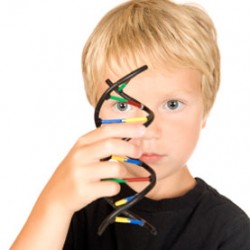Psychiatric Tragedy
Psychiatric Tragedy
A recent article in the Washington Post, entitled “Her brain tormented her, and doctors could not understand why.” was a heart-wrenching story of a troubled young woman who suffered greatly in her final years before dying at the young age of 23 due to a reaction to a prescription drug. This story is a haunting example of the all-too-common tragic outcomes of people who suffer from extreme states of human distress. Unfortunately, the Post’s rhetorical tale, which is based on misinformation, extreme reductionism, and a distortion of research, only adds to the tragedy of Ms. Pam Tusiani.
The Post’s first error is in taking as fact the idea that extreme emotions, suicidal thoughts, and seemingly strange ideas and behaviors are “symptoms” of a medical, biological disease. The problem is exemplified in the statement: “What was once thought to be the result of child abuse or a manifestation of post-traumatic stress is now its own complex personality disorder. And it’s deadly”. This statement is somewhat incomprehensible considering that “personality disorder” is simply a label and nothing more. It doesn’t describe a “disease”; it describes a problem.
At no point does the author express how or why a post-traumatic reaction suddenly was re-conceptualized as a “deadly” disease according to his resources (assuming he has any). In fact, research does continue to show that up to 92% of individuals labeled with borderline personality disorder (BPD) have experienced some kind of childhood abuse1. In addition, they are more likely to have experienced sexual abuse, specifically, and they have a greater number of perpetrators than people labeled with other kinds of psychiatric diagnoses. Dismissing off-hand the post-traumatic nature of the problem called BPD is an egregious error and not based on the scientific research. Further, the biological evidence the author cites as proof of “disease” (i.e., problems in the amygdala and “fight or flight” reactions) are precisely those that occur in individuals who have experienced extreme, chronic stress and/or trauma such as child abuse. But it must be emphasized that these biological consequences do not cause BPD. They are natural human reactions to intense and chronic stress of any kind. Presenting them as evidence of disease is like saying concussions are evidence that playing football is a disease.
With this in mind, then, one must first wonder what “cure” all the medical doctors are looking for? Have they read the work of Bessel van der Kolk, M.D. or Marsha Linehan, Ph.D.? Have they read any of the extensive studies showing the effectiveness of trauma-focused therapy, dialectical behavior therapy, yoga, meditation, somatic therapies, and others? What is this biological cure so many are seeking? Perhaps they may start by increasing efforts to prevent and ameliorate child abuse.
Second, giving the benefit of the doubt that DSM-defined categories are true diseases that exist in nature separate from the subjectivity of the person making said diagnosis (which is a dubious assumption), the author discusses the case of a young woman diagnosed with BPD, yet goes on to state: “We barely understand a healthy brain, so how are we to understand one haunted by psychosis?” This statement is a glaring error in even the most rudimentary understanding of psychiatric problems, for one would be hard pressed to find a clinician who deemed BPD to be a characterized by psychosis. However, the author may be saved by the fact that DSM-diagnostic categories lack validity and reliability anyways (the Director of the National Institute of Mental Health said so in 2013) and there are, in fact, no distinct lines that can define any one person’s experience completely.
Another error in research reporting is the author’s claim that “The suicide rate is higher for people with BPD than for those with major depression and schizophrenia; about 4 to 9 percent kill themselves”. In fact, the commonly cited estimate for suicide in persons diagnosed with schizophrenia is 10% to 13%, with approximately two to five times that rate attempting suicide3, 4. Additionally, approximately two thirds of all cases of suicide include the occurrence of “depression” 5, 6. The overall message should be that people who suffer, and suffer deeply, are more likely to commit suicide. Why make erroneous comparisons that are not even backed up by resources?
Perhaps the greatest error within this article is the complete disregard for the long-standing iatrogenic effects her so-called “treatment” may have had. The author’s own statement should have raised huge, waving red flags: “She was on a laundry list of medication”. Many of these that are listed, including Paxil, Prozac, and Zoloft, are known to create an increased risk of suicide, violence, and agitation, especially in young adults and adolescents. Even more importantly, a recent study showed that pharmacotherapy for BPD “is not supported by the current literature” and that “polypharmacy should be avoided whenever possible”, recommending psychotherapy is the first-line treatment for BPD7. Another disregarded potential exacerbating factor is the internalized stigma, shame, and helplessness that comes from being told one has a “brain disease” instead of having the source of her pain recognized and addressed. She was in and out of hospitals, an experience that has been shown to directly create post-traumatic phenomena in those with the most severe problems, such as psychosis8. Lastly, many of the drugs that Ms. Tusiani was on are also shown to create psychotic experiences. Yet, not once does the author acknowledge or explore these clearly evident possibilities. Even the fact that the young woman died as a direct result of taking the antidepressant Parnate does not lead to an investigation of how this “laundry list” of drugs might have affected her. Instead, the subject is put to rest by blaming it on the fact that the drug was prescribed in a treatment center that was providing unlicensed medical care. Would the outcome have been any better if the center had that license?
The story of Ms. Tusiani and her fatal experiences with inner turmoil and ineffective treatments is one that should be heard by an audience much larger than that served by the Washington Post. However, her story also deserves to be told with the integrity and fortuitousness of a critical journalist unafraid to ask the important questions. The family of Ms. Tusiani is understandably angered and determined to ensure that others do not have to endure the misfortunes that became their daughter. Such prevention begins by looking at the evidence that stares us directly in the eyes.
References:
- 1. Zanarini, M. C., Williams, A. A., Lewis, R. E., Reich, R. B., et al. (1997). Reported pathological childhood experiences associated with the development of borderline personality disorder. The American Journal of Psychiatry, 154, 1101-1106.
- 2. Ogata, S. N., Silk, K. R., Goodrich, S., Lohr, N. E., Westen, D., & Hill, E. M. (1990). Childhood sexual and physical abuse in adult patients with borderline personality disorder. The American Journal of Psychiatry, 147(8), 1008-1012.
- 3. Siris, S. (2001). Suicide and schizophrenia. Journal of Psychopharmacology, 15, 127-135.
- 4. Caldwell, C. B., & Gottesman, I. I. (1990). Schizophrenics kill themselves too: A review of risk factors for suicide. Schizophrenia Bulletin, 16, 571-589.
- 5. Conwell, Y., Duberstein, P. R., Cox, C., Herrmann, J. H., Forbes, N. T., & Caine, E. D. (1996). Relationships of age and axis I diagnoses in victims of completed suicide: A psychological autopsy study. American Journal of Psychiatry, 153, 1001-1008.
- 6. Henriksson, M., Aro, H., Marttunen, M., Heikkinen, M., Isometsa, E., Kuoppasalmi, L., & Lonnqvist, J. (1993). Mental disorders and comorbidity in suicide. American Journal of Psychiatry, 150, 935-940.
- 7. Francois, D., Roth, S. D., & Klingman, D. (2015). The efficacy of pharmacotherapy for borderline personality disorder: A review of the available randomized controlled trials. Psychiatric Annals, 45, 431-437.
- 8. Berry, K., Ford, S., Jellicoe-Jones, L., & Haddock, G. (2013). PTSD symptoms associated with the experience of psychosis and hospitalization: A review of the literature. Clinical Psychology Review, 33, 526-538.









